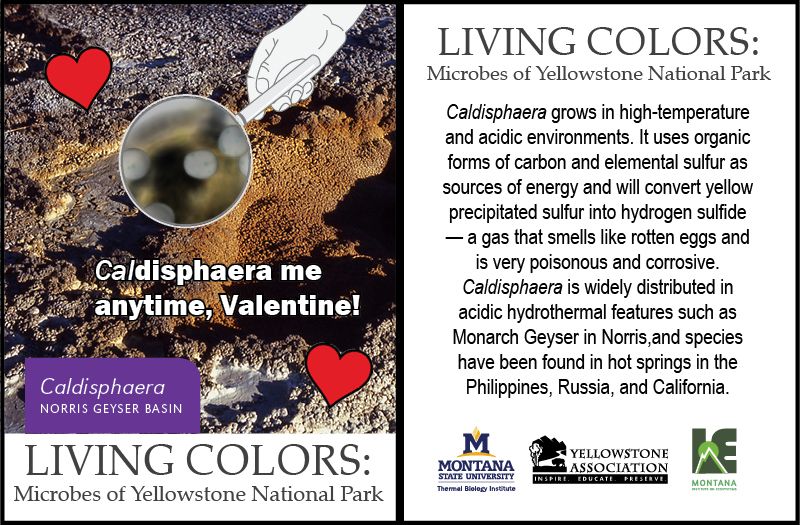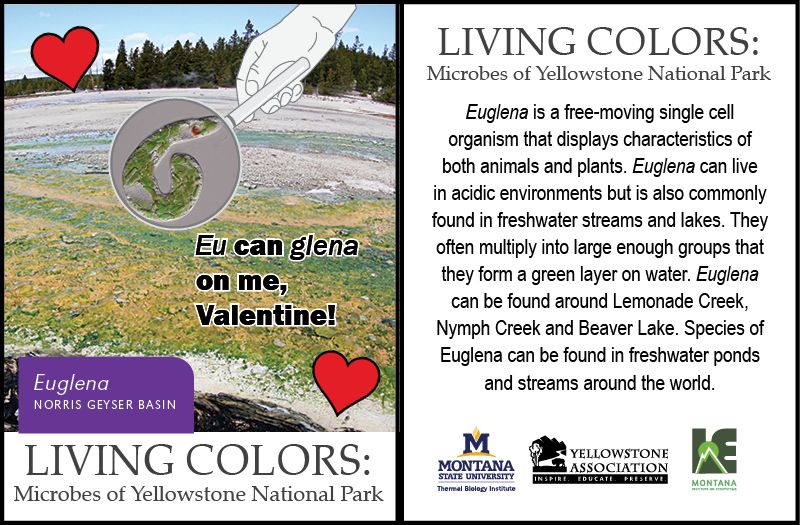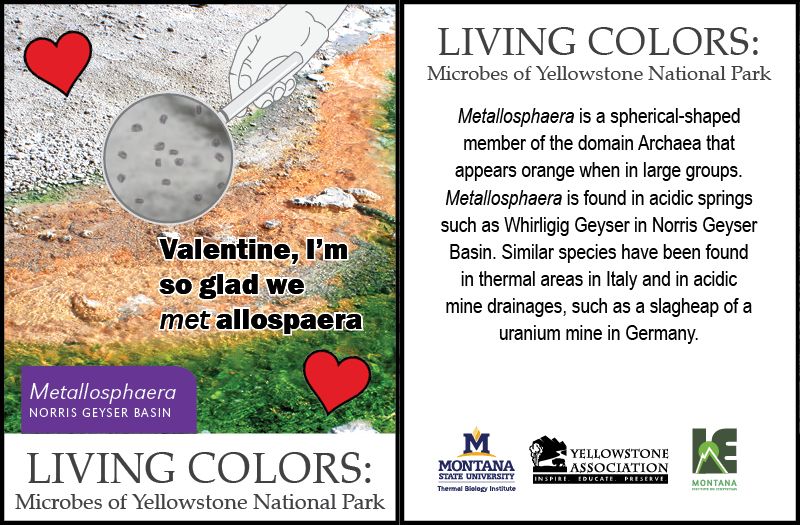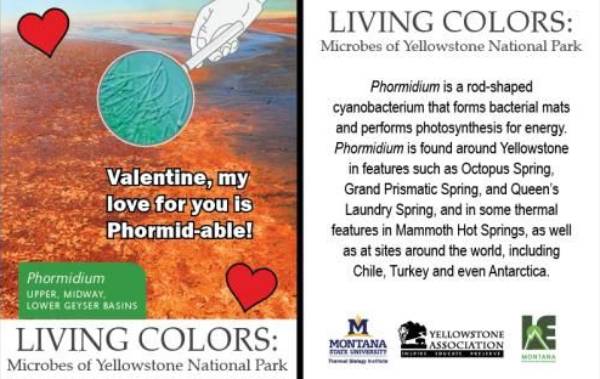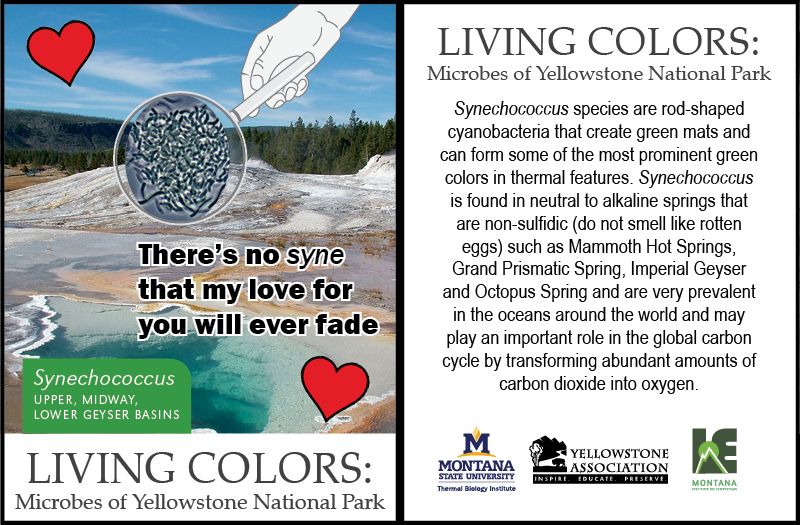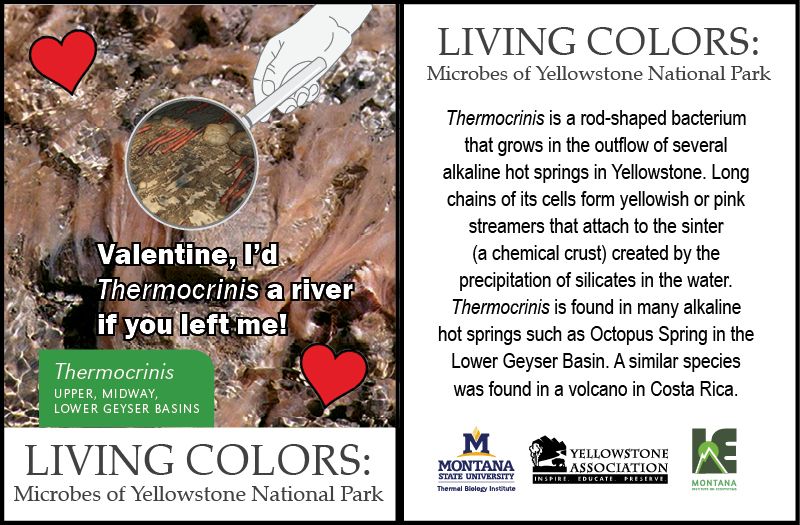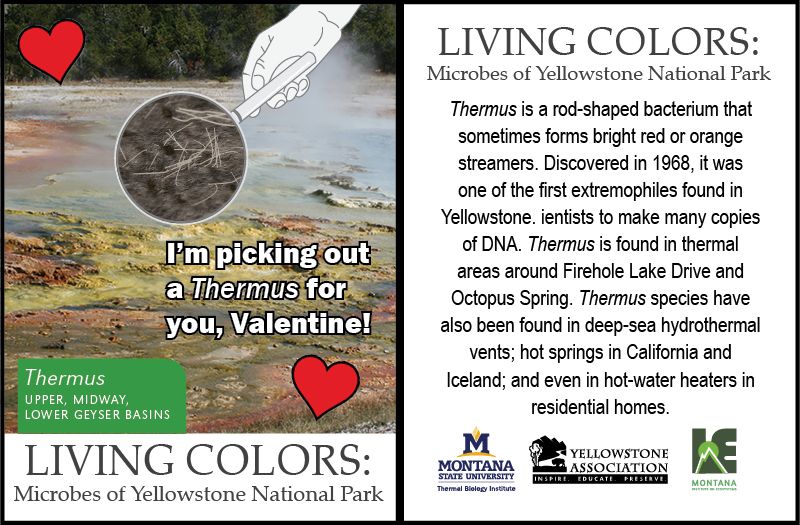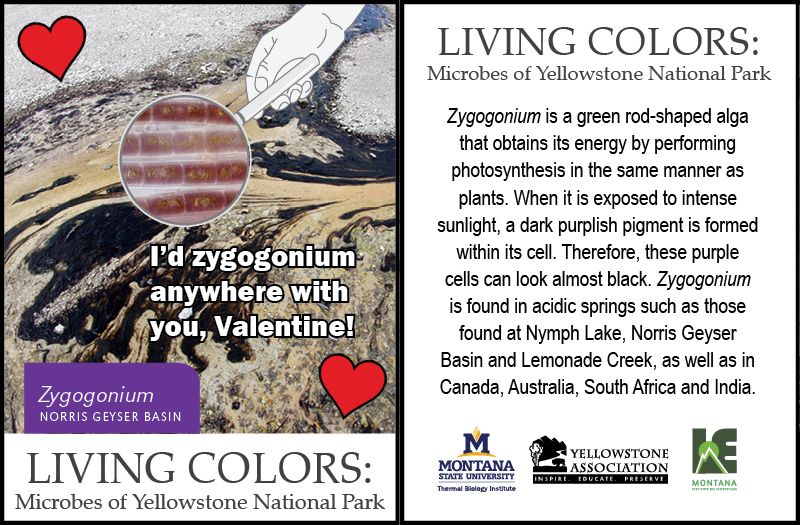Microbial Valentines
What says LOVE more than a Microbe?
As a little bit of microbial fun, we introduce our series of science valentines, based on the educational guidebook called Living Colors: The Microbes of Yellowstone, produced by the MSU Thermal Biology Institute, Montana Institute on Ecosystems, and the Yellowstone Association.
Learn more at the link below.
Download the microbial valentines below and share with your favorite science-y pals!
Right-click on one of these images to download a larger image
that you can print or post.
